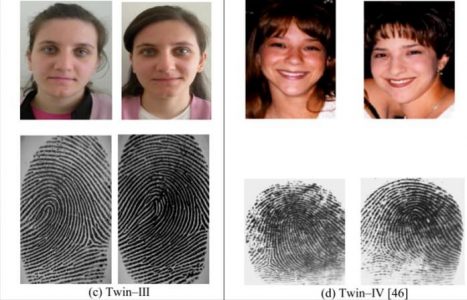1926 Dr.Harold Cummins introduced Dermatoglyphics. Dermatoglyphics is derived from Greek:
Derma means skin and Glyph means carving.
Scientist is based on epidermal theory or lines on skin surface. Dermatoglyphics has strong scientific basis since it is supported by research. Scientist believes that fingerprint is one’s “blue print”.
He is acknowledged as the Father of Dermatoglyphics.He studied all aspects of fingerprint analysis in fields as varied as anthropology, embryology and genetics.His famous Down syndrome studies accurately predicted the genetic link to the disease upon study of fingerprint patterns and the Simian crease.

1968, Sarah Holt, whose own work ‘The Genetics of Dermal Ridges’ published in 1968, summarizes her research in of dermatoglyphics patterns of both the fingers and the palm in various peoples, both normal and congenitally afflicted.

Nowadays : through continuous research fingerprints may also be used in disclosing or mapping the type of one’s intelligence / talent, learning style, and innate personality or character.
This method is popularly known as “Fingerprints Intelligence Analysis Test” or globally called as “Dermatoglyphics Multiple Intelligence Test” (DMIT)
Dermatoglyphics Analysis is an integration of neuroscience, medicine, genetics, psychology and behavioral science and it is based on the formation and the amount of ridges present on the finger prints.
1788, J.C.Mayer was the first to write out basic tenets of fingerprint analysis and theorized that fingerprints were unique
1823, Dr. Jan Purkinje classified the papillary lines on the fingertips into nine types: arch, tented arch, ulna loop, radial loop, peacock’s eye/compound, spiral whorl, elliptical whorl, circular whorl, and double loop/composite.

1823; John Evangelist Purkinji professor of anatomy research found that the patterns on one’s finger tips and the ridges and lines on one’s prints begin to form at around the 13th week in the womb.

Twins come from the same fertilized egg and share the same genetic blueprint.
To a standard DNA test, they are indistinguishable. But any forensics expert will tell you that there is at least one surefire way to tell them apart: identical twins do not have matching fingerprints.

1832, Dr. Charles Bell (1774-1842) was one of the first physicians to combine the scientific study of neuro-anatomy with clinical practice. He published The Hand:
Its Mechanism and Vital Endowments as Evincing Design.

1892, Dr. Francis Galton published his book, “Fingerprints”, establishing the individuality and permanence of fingerprints. The book included the first classification system for fingerprints: Arch, Loop and Whorl.



